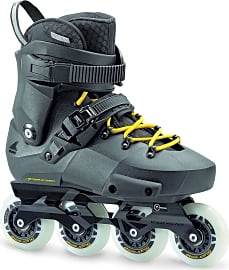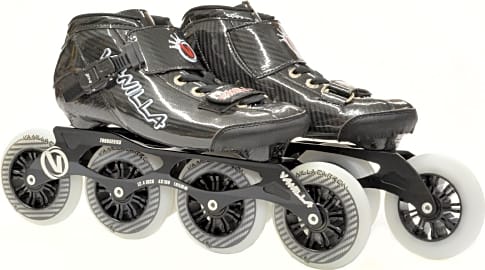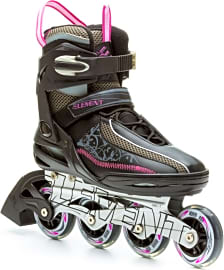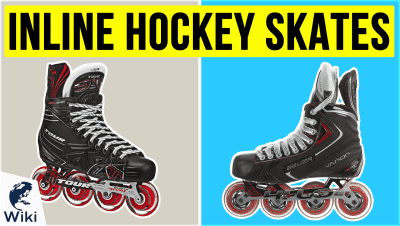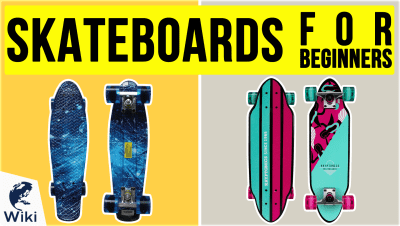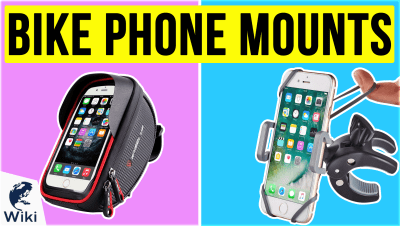The 9 Best Roller Blades

This wiki has been updated 44 times since it was first published in March of 2015. Inline skates are perfect for getting fit while also having a lot of fun, and they offer a great training option for ice hockey players, too. Our selection includes some of the best rollerblades on the market, suitable for everyone from experienced skaters to first timers who might be a little unsure whether they will stick with the hobby. When users buy our independently chosen editorial selections, we may earn commissions to help fund the Wiki.
Editor's Notes
November 26, 2019:
Rollerblading seems to be steadily increasing in popularity after languishing as an inefficient and outdated form of travel since the late 1990s. As a lifelong hockey player, both on ice and wheels, this makes me pretty happy, especially when it comes to evaluating the available skates on the market. In the recreational skating world, Rollerblade and Bladerunner are still the top brands, with the Rollerblade Twister Edge being one of the most durable, comfortable options on the market for everyday commuters.
Tour is a company that's capitalized on a vacuum left behind by the likes of V-Form and Mission, the latter of whom still make inline hockey skates, but do a terrible job making them available to players outside of a few specific sales channels. What's worse, their prices are generally too high for a majority of players, with their entry-level senior skates costing as much as the most expensive options in this ranking. And the Tour Hockey Code 9 SR offer just about everything a Mission pair could, with the notable exception of durability. Still, there's a lot of brand loyalty for Mission in the roller hockey world, so we included their top-of-the line offering in our special honors section.
Special Honors
Mission RH Inhaler FZ-0 In addition to being exceptionally fast and lightweight, these skates boast a metatarsal guard that's designed to make them some of the most comfortable boots on the market, especially for competitive roller hockey players. Their comfort and performance don't come cheap, but they might take your game to a new level. bauer.com
The Myriad Benefits of Owning Rollerblades
You can lace them up on an autumn day, then take them for a spin around the park.
To the uninitiated, rollerblades might seem like a convenient way to make street hockey feel a little more like ice hockey. The reality is that rollerblades are often used for other forms of recreation. Rollerblades can strengthen the quadriceps, sure. But they can also reduce muscle pain and joint pain. Rollerblades can improve a person's coordination and balance, and they can be used to improve a person's cardio and endurance level, as well.
Blading daily, combined with a balanced diet, is a great way to reduce stress, while losing weight and toning your body. In addition, rollerblading will allow you to spend more time in the sun, which means you can get a tan while increasing your Vitamin D production.
If you're single, rollerblading makes for a fun first date. If you've just moved, rollerblading is a great way to become familiar with the area. If you live along the water, rollerblading is a picturesque way to get from point A to point B. If you live in a city, rollerdancing is a great way to meet new people, while getting connected to a new scene.
If you're a cross-country skier (or you work out on an elliptical trainer), rollerblading with poles is a great way to simulate those same techniques. If you have kids who are learning how to skate, rollerblades are a perfect way to accompany them as you teach. If you like to be spontaneous, why not keep a pair of rollerblades inside your car? You can lace them up on an autumn day, then take them for a spin around the park.
What Separates a Good Pair of Rollerblades From a Great Pair?
If your feet don't feel comfortable in a pair of rollerblades, then it really doesn't matter how well that pair of rollerblades performs. This is why it pays to try on a pair of rollerblades, regardless of whether you eventually plan on purchasing them online, or in a store.
This is why it pays to try on a pair of rollerblades, regardless of whether you eventually plan on purchasing them online, or in a store.
Unlike sneakers, which most people prefer to buy with a little bit of toe room, the inner-lining of a rollerblade should fit snugly. Purchasing a pair of blades with additional wiggle room can, and eventually will, result in injuries, as there's a greater chance that the blades will either collapse or slide. With that in mind, you'll want to get an accurate measurement of your foot — including not only the length, but the width — before you narrow down your choices, and decide.
By and large, you'll want to avoid any pair of rollerblades that aren't recommended for outdoor use. In addition, you'll want to confirm that the wheels have been made out of either plastic polymers or rubber mesh. Some of the best inline wheels may be susceptible to wear, which is why you'll want to buy some extra wheels to keep on hand as replacements. Beyond that, check to make sure that any pair of rollerblades are capable of offering ventilation. An airtight blade can lead to blisters, and it can also lead to stagnant sweat and athlete's foot.
How The Inline Skate Became a Rollerblade
Inline skates were invented by a French stage designer named Louis Legrange in 1849. Legrange was working for an opera at the time, and that opera called for one character to appear as if he was gliding across a sheet of ice. Legrange succeeded in creating the stage prop, but he didn't pursue the inline concept any further.
Over the next twenty-five years, inline skates were manufactured as a specialty item, commissioned almost entirely by high-level segments of the ice-skating community.
A century later, in 1953, an American inventor named Ernest Kahlert was awarded a patent for what he initially referred to as his "longitudinal roller skate." True to its name, Kahlert's skate was designed to accommodate up to seven in-line wheels. This skate was surprisingly aerodynamic, and it began to attract attention after being featured in Popular Mechanics during 1954.
Over the next twenty-five years, inline skates were manufactured as a specialty item, commissioned almost entirely by high-level segments of the ice-skating community. The idea was to provide professional athletes with a resource for training during the warm-weather months. Russian athletes began using inline skates on a regular basis.
An American speed skater named Eric Heiden made headlines after he was photographed by LIFE Magazine, while training in a pair of inline skates just a few months prior to the 1980 Winter Olympics in Lake Placid.
The first company entirely dedicated to the manufacture of inline skates was named Rollerblade. Rollerblade was founded in Minnesota during the early 1980s, and the company bought its first inline skates to market during 1987.
By the mid-1990s the brand name Rollerblade had become almost synonymous with the inline-skate industry to an extent that, two decades later, the catch-all term rollerblade is actually more recognizable than inline skate ever was.



